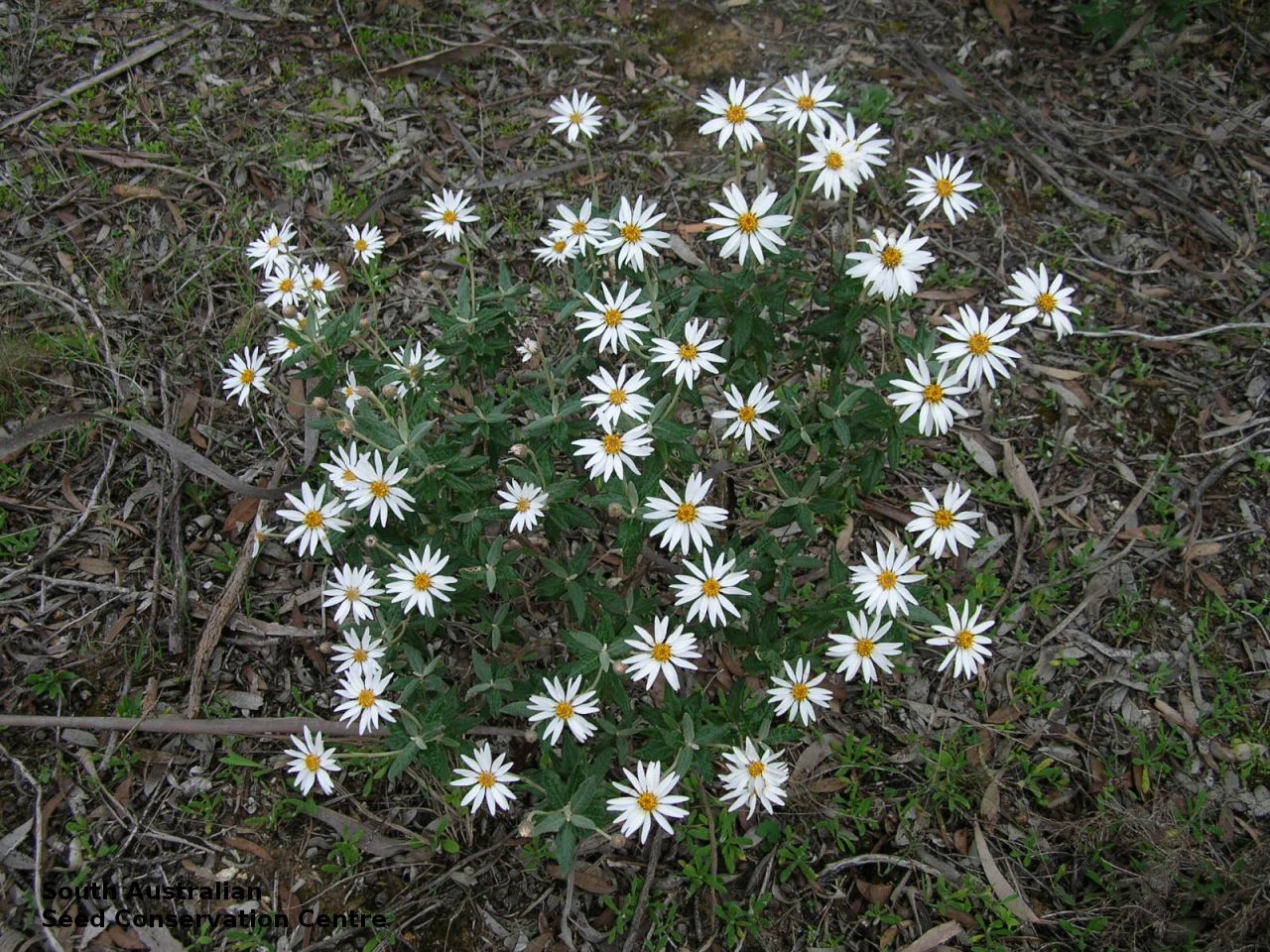
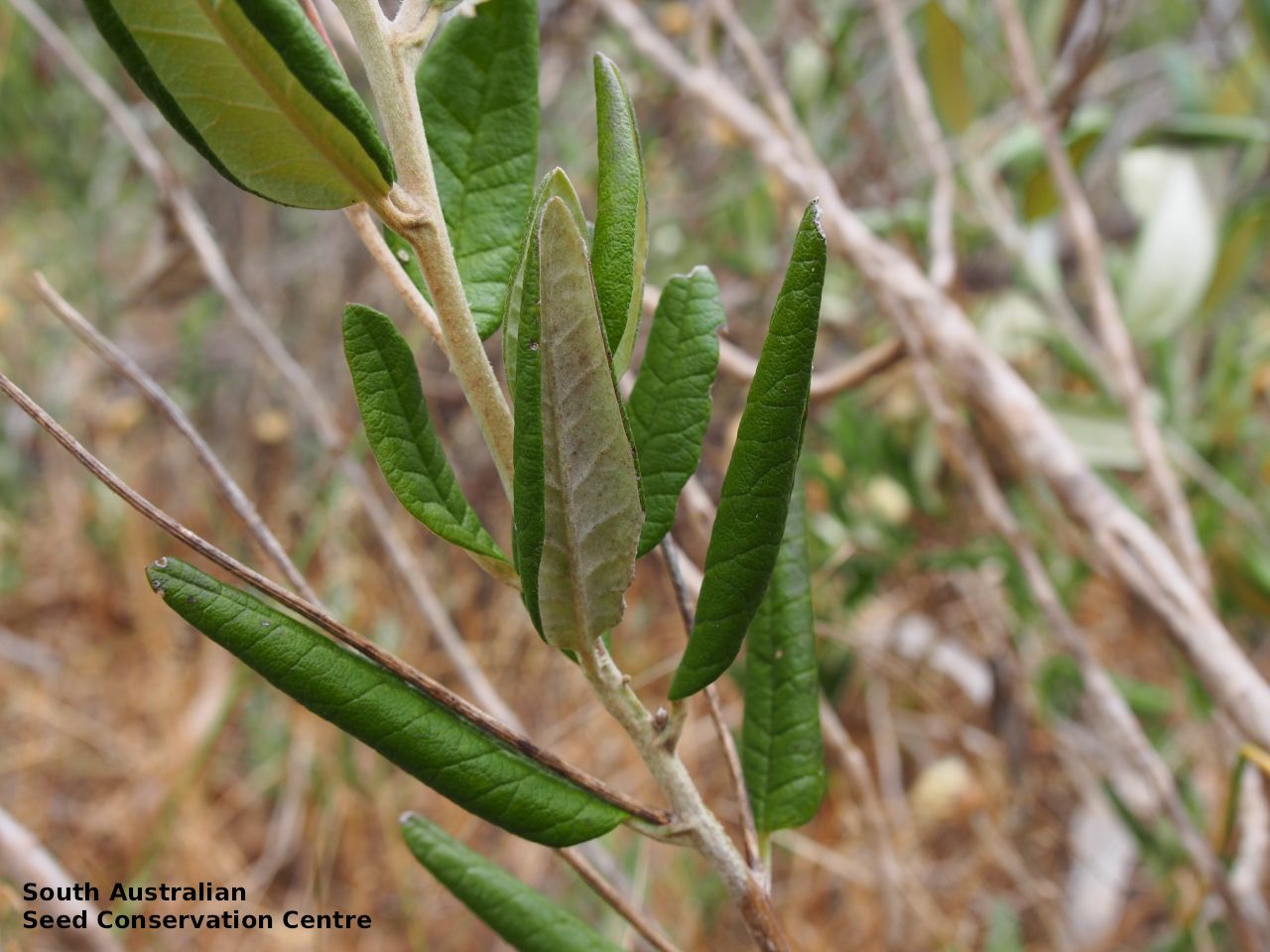
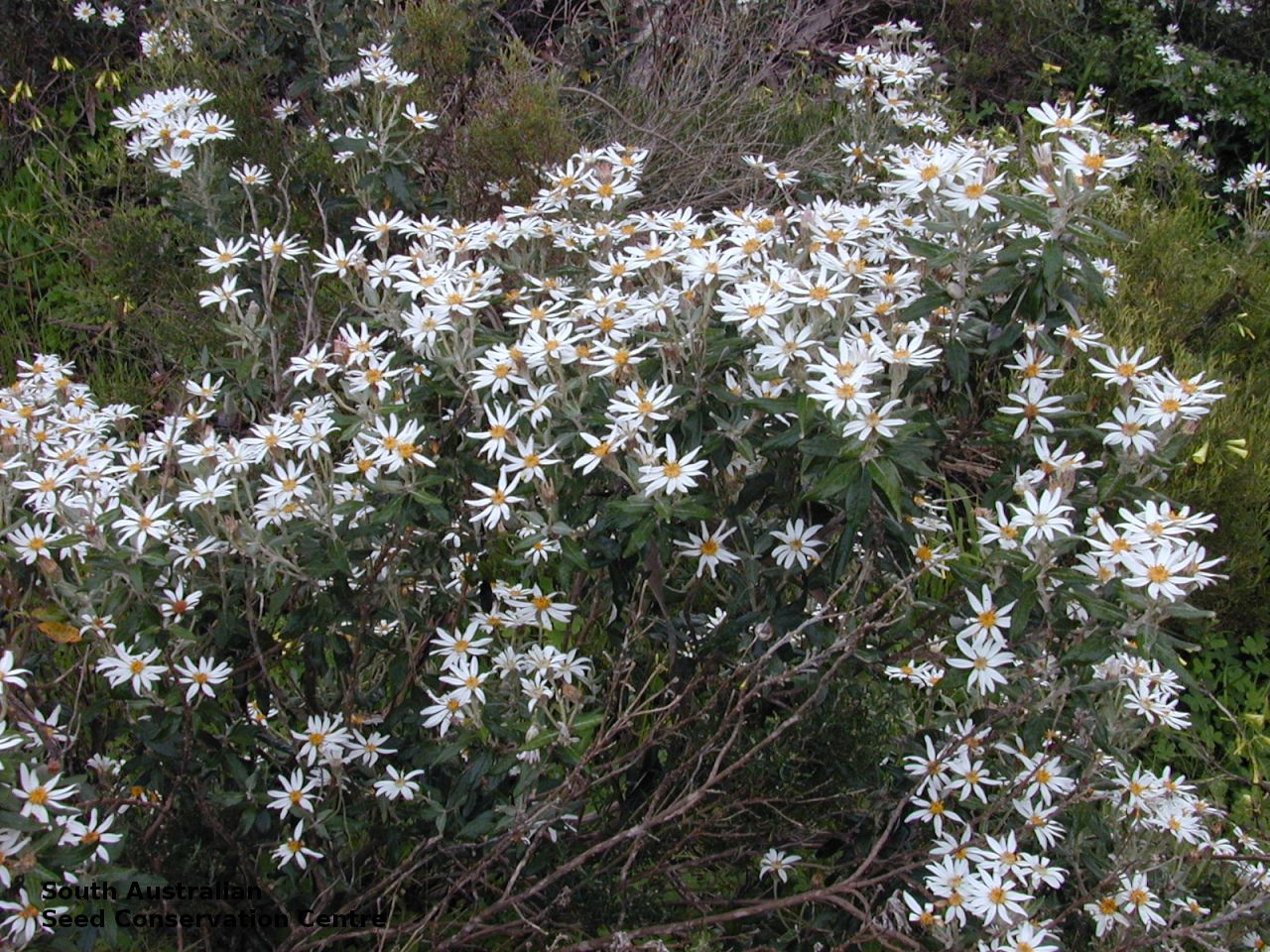
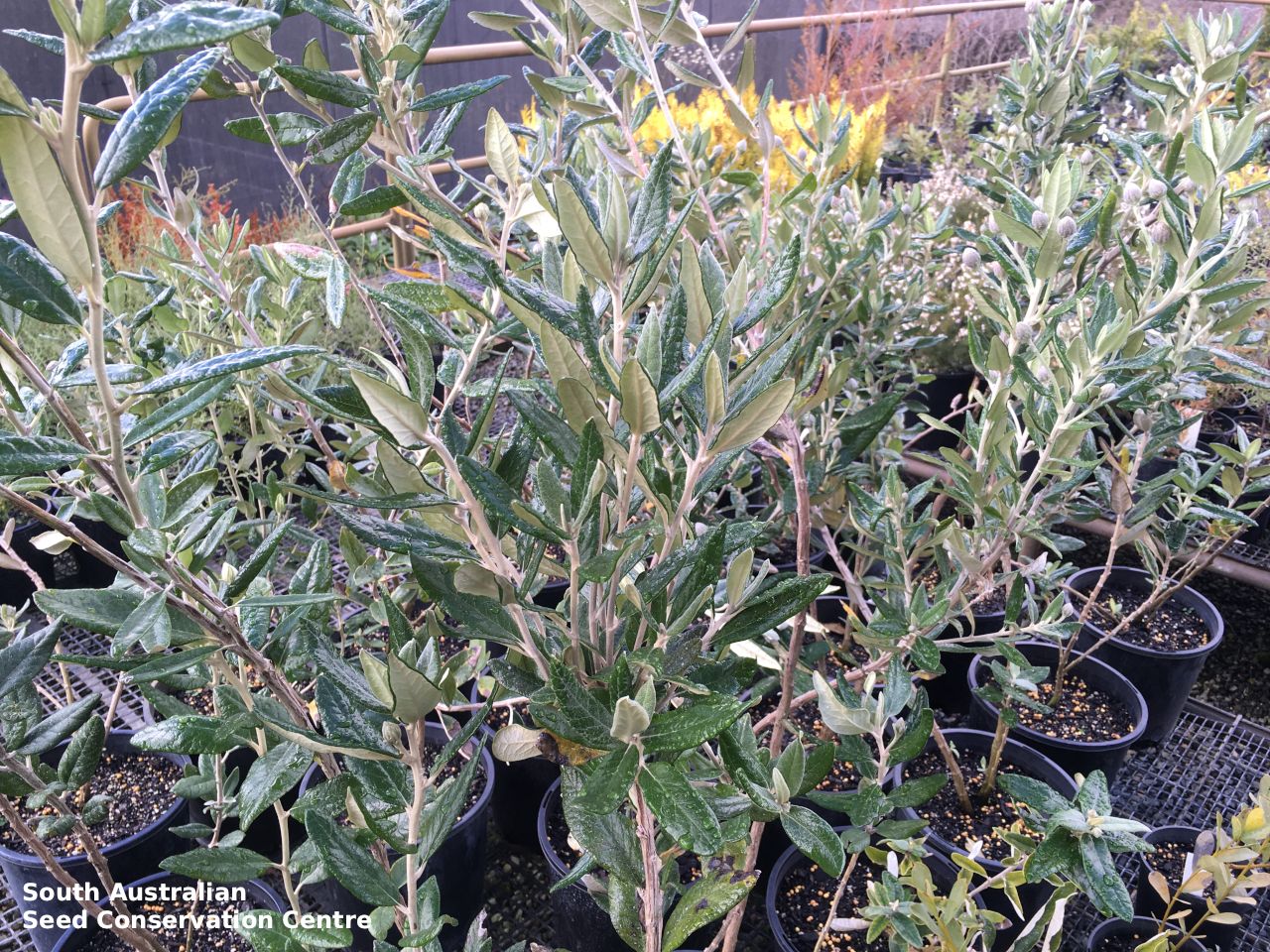
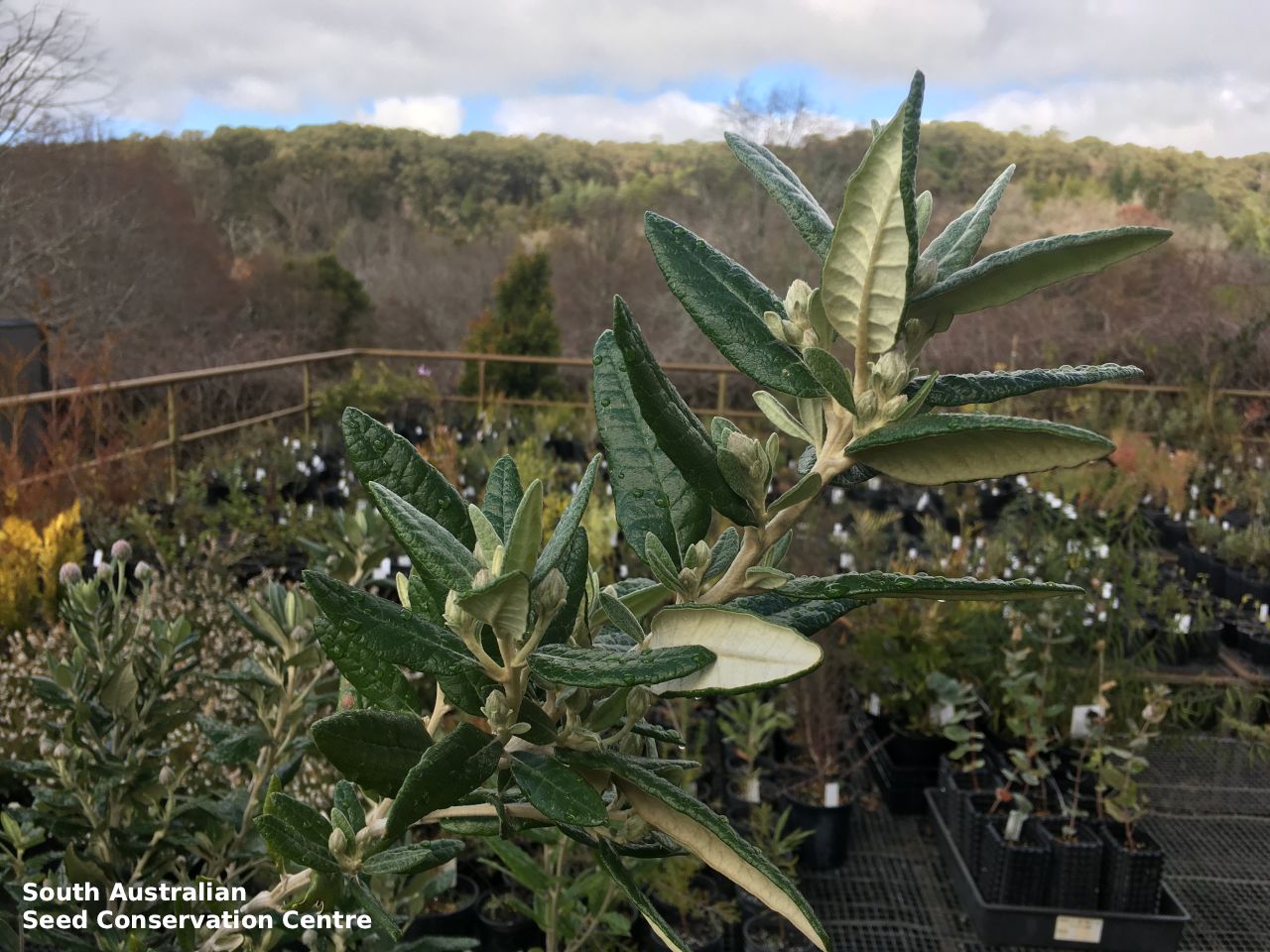
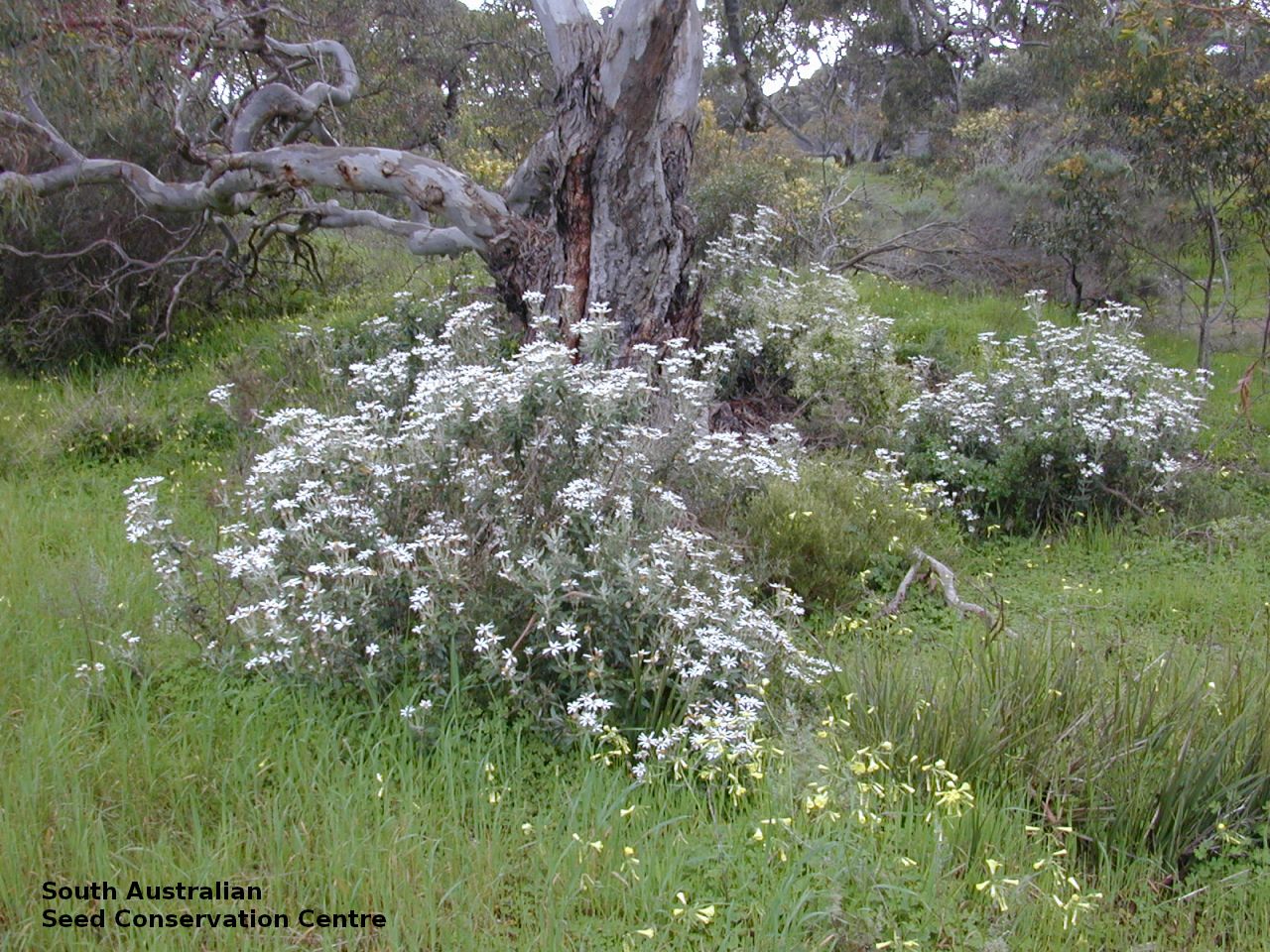
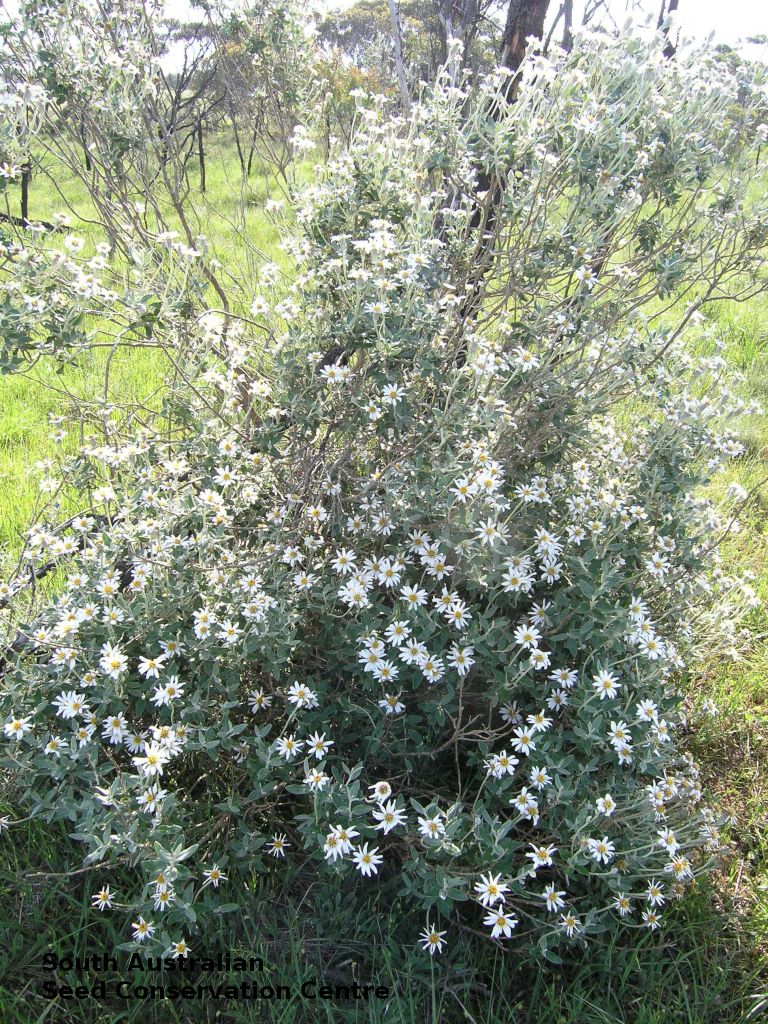
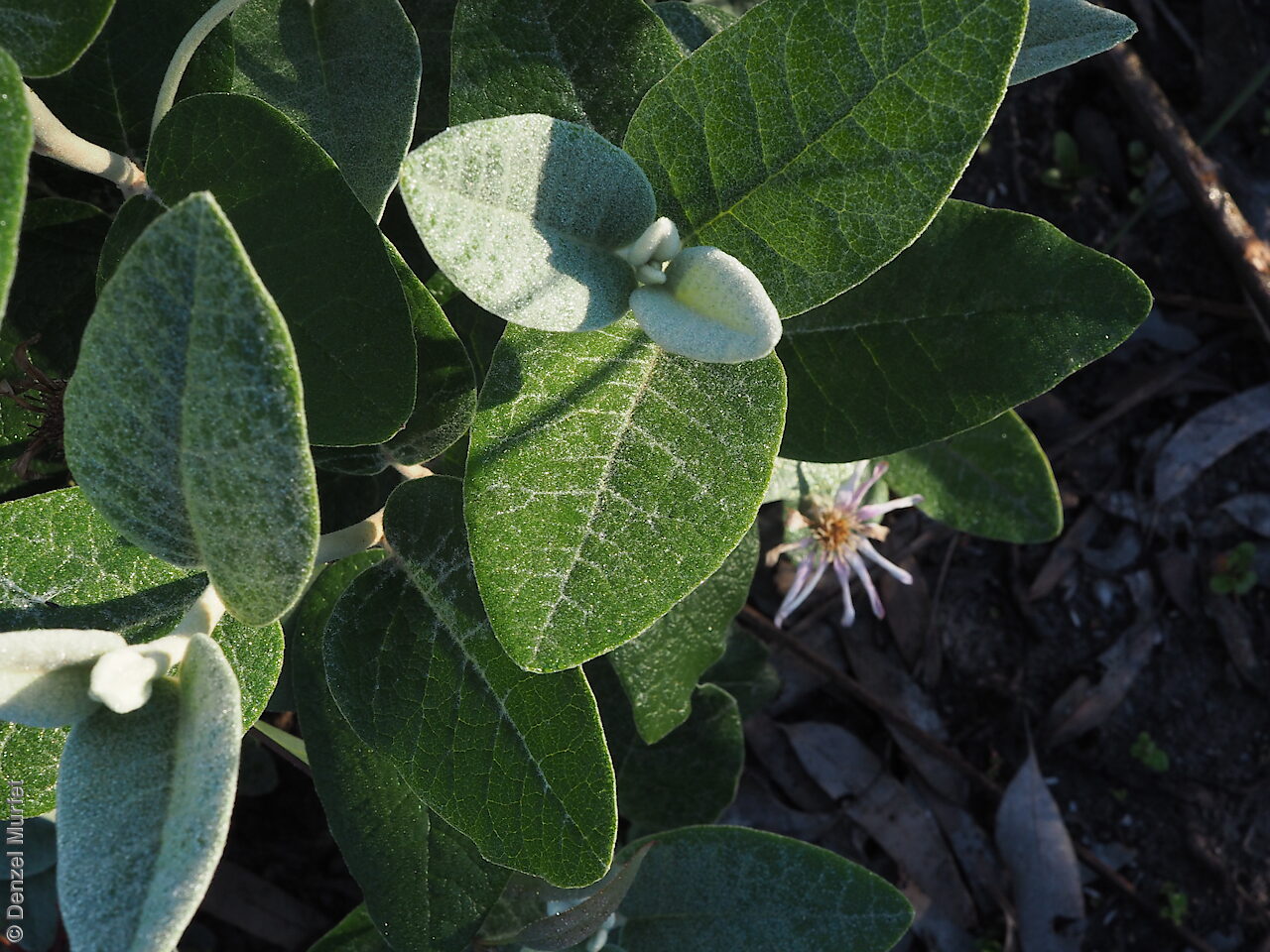
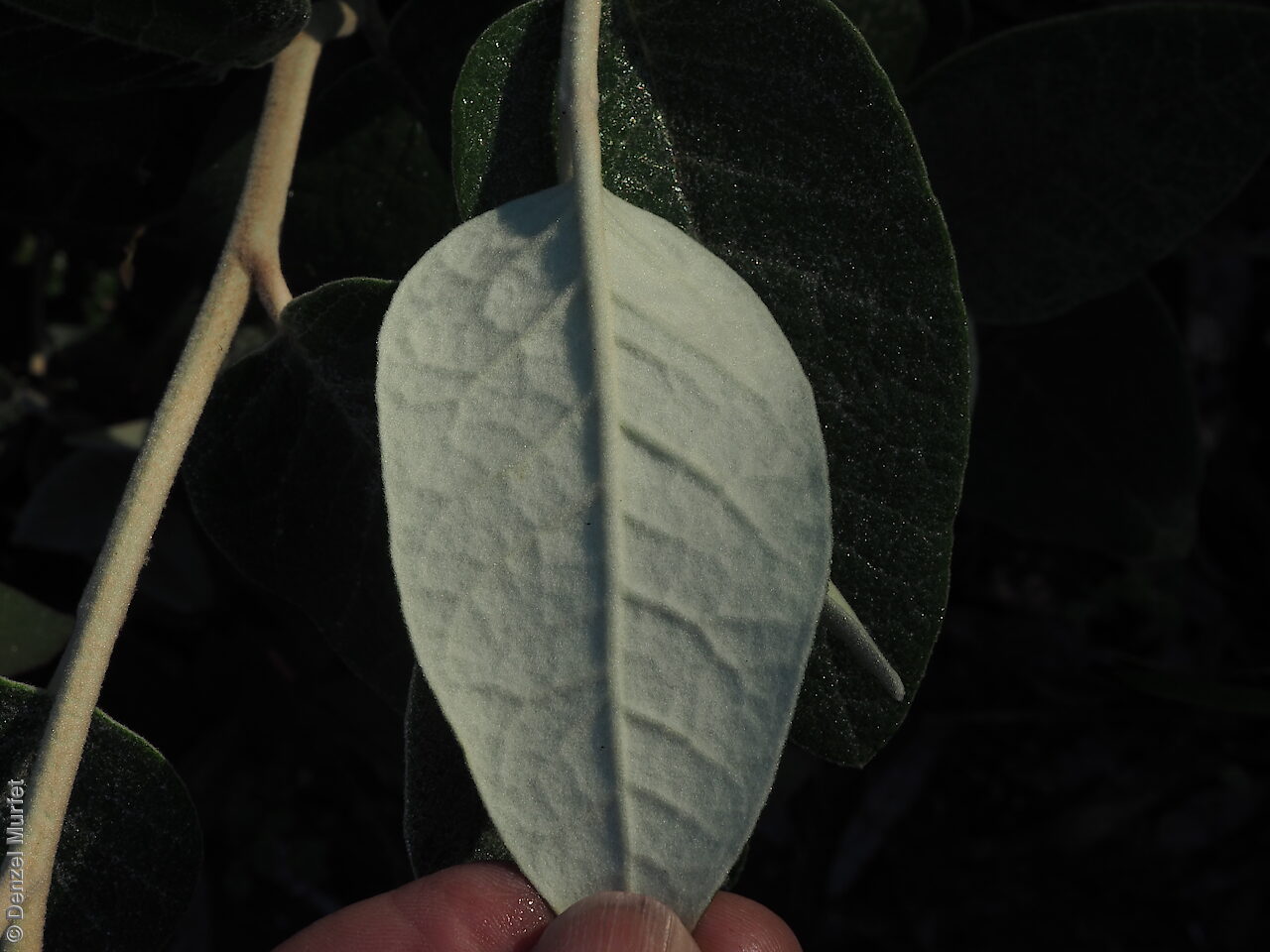
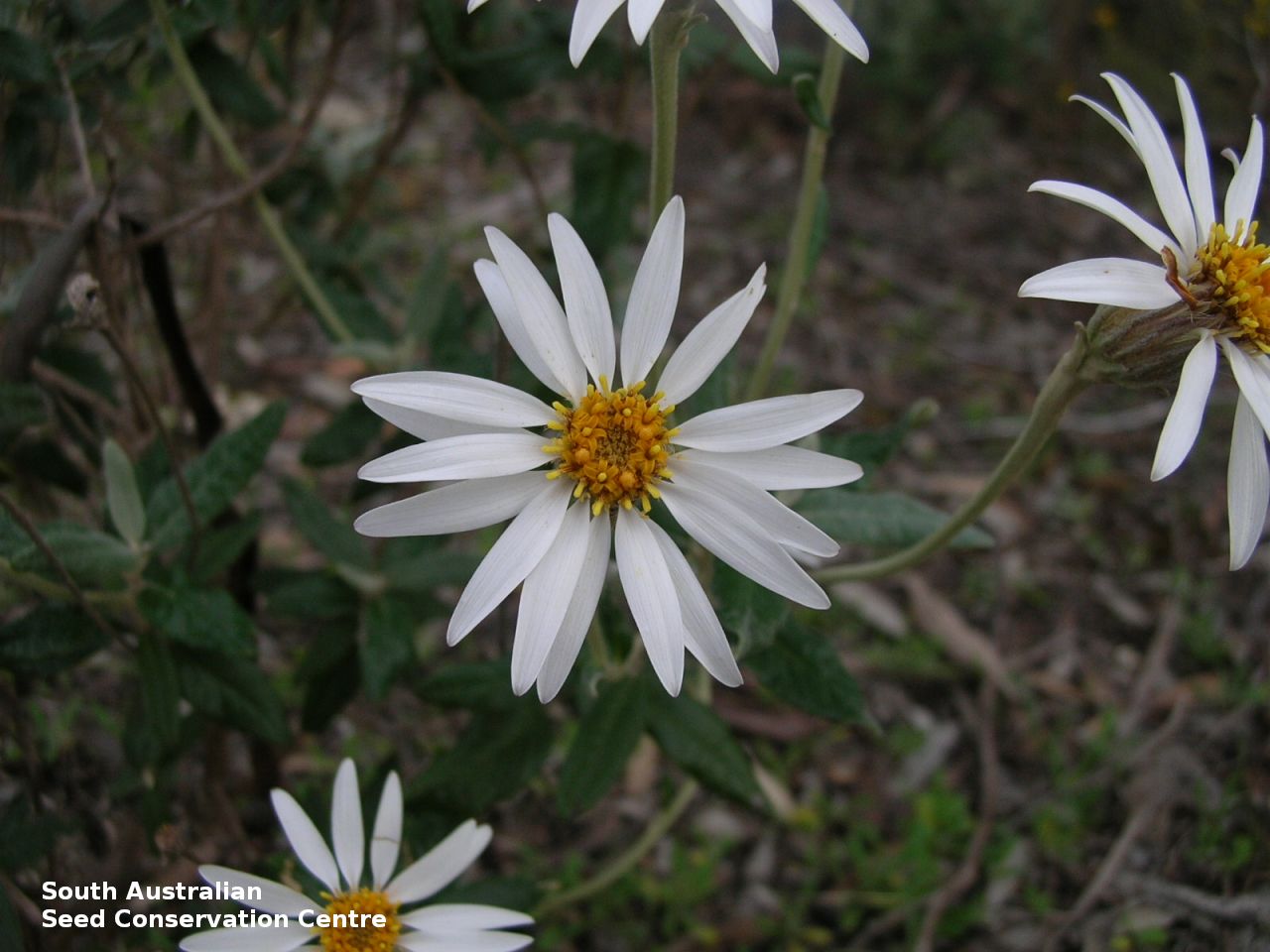
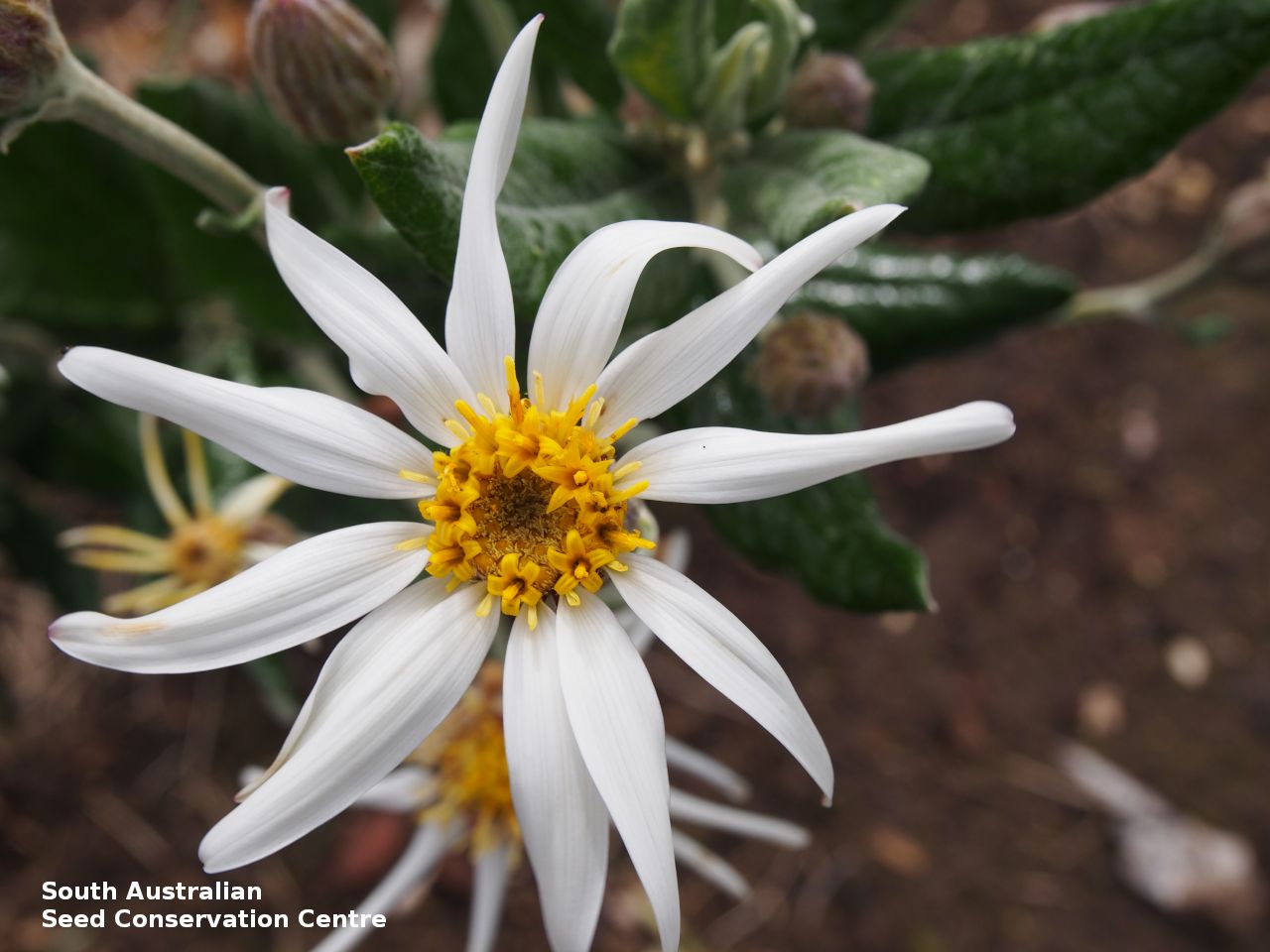
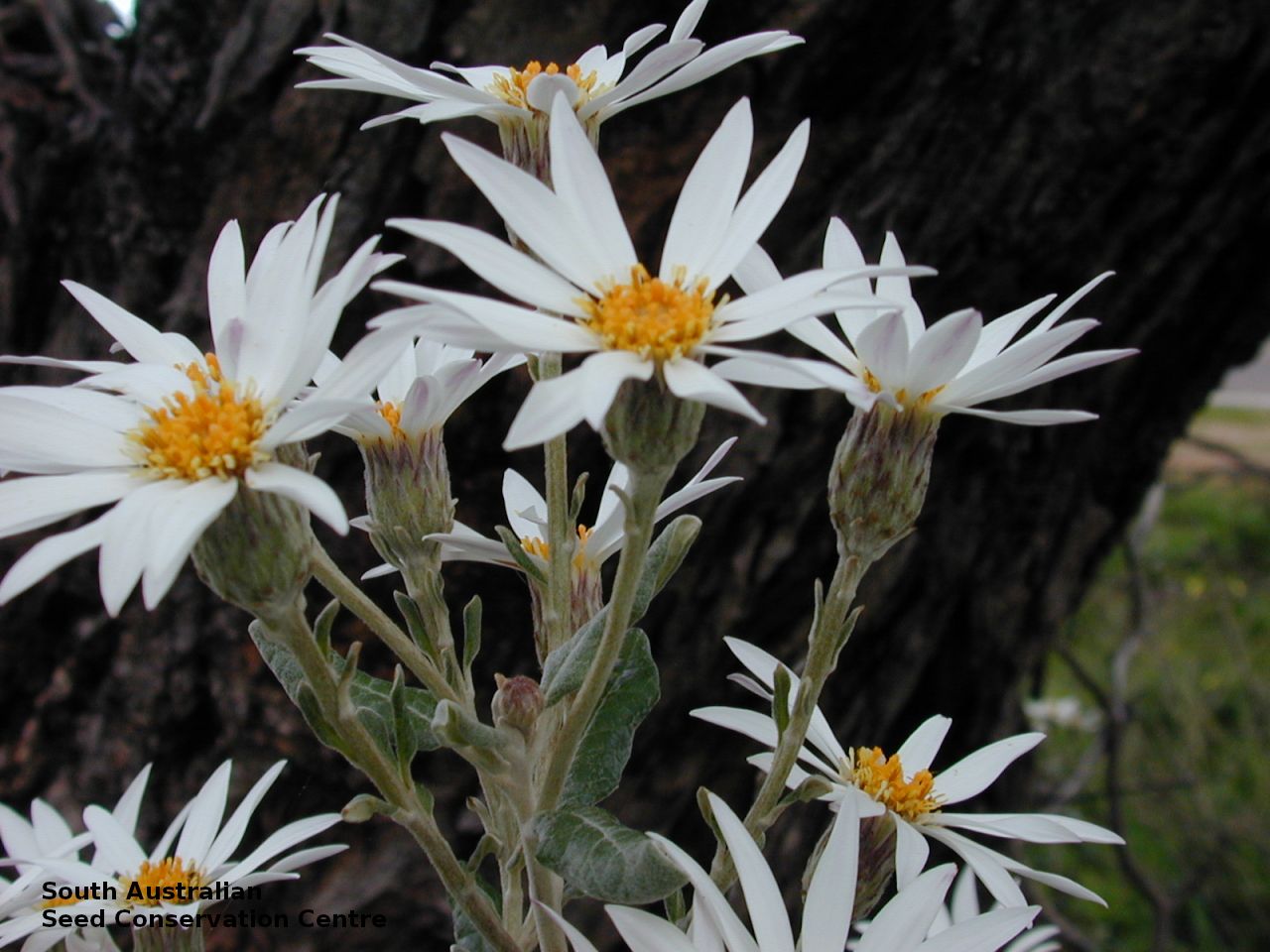
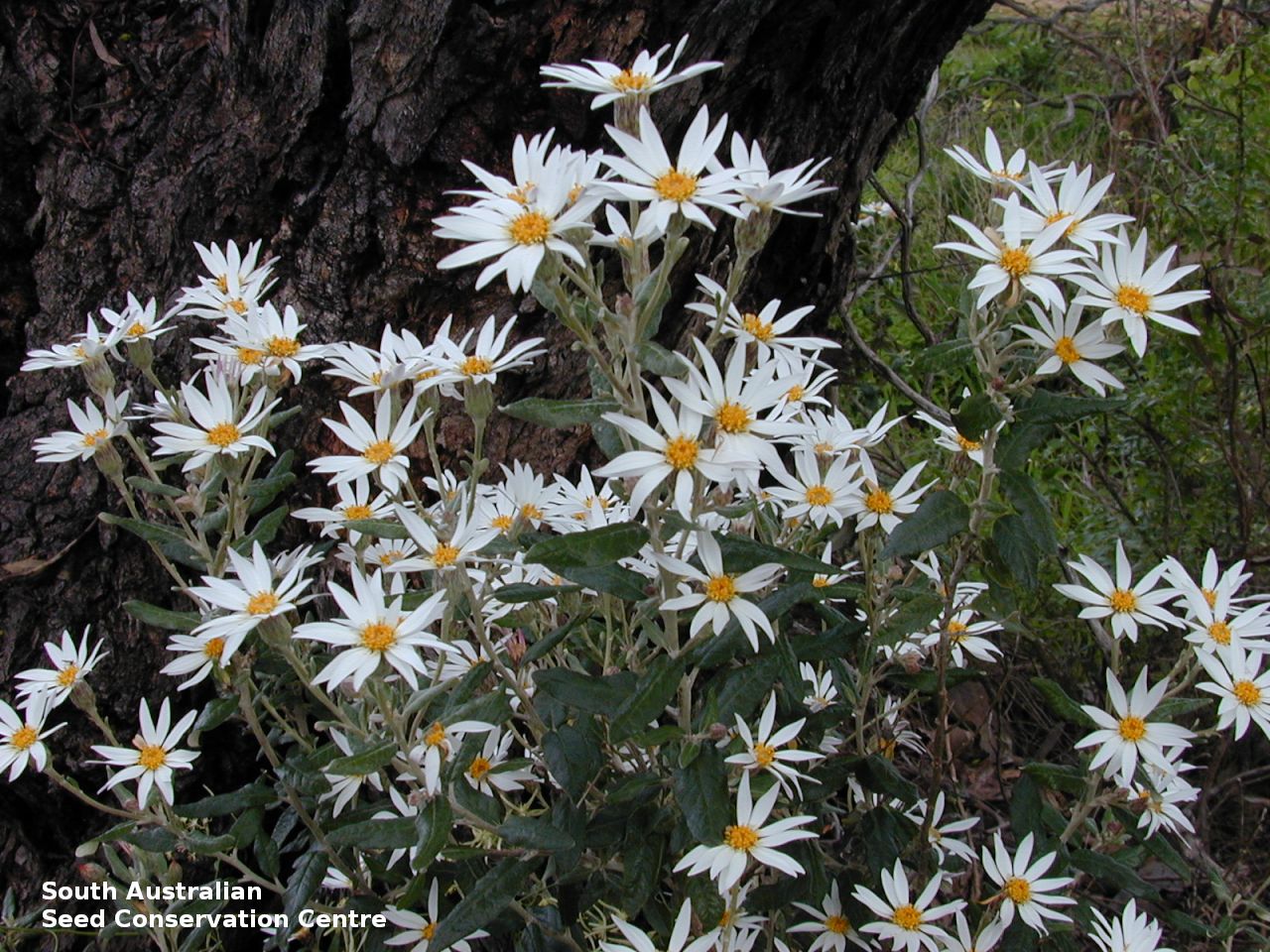
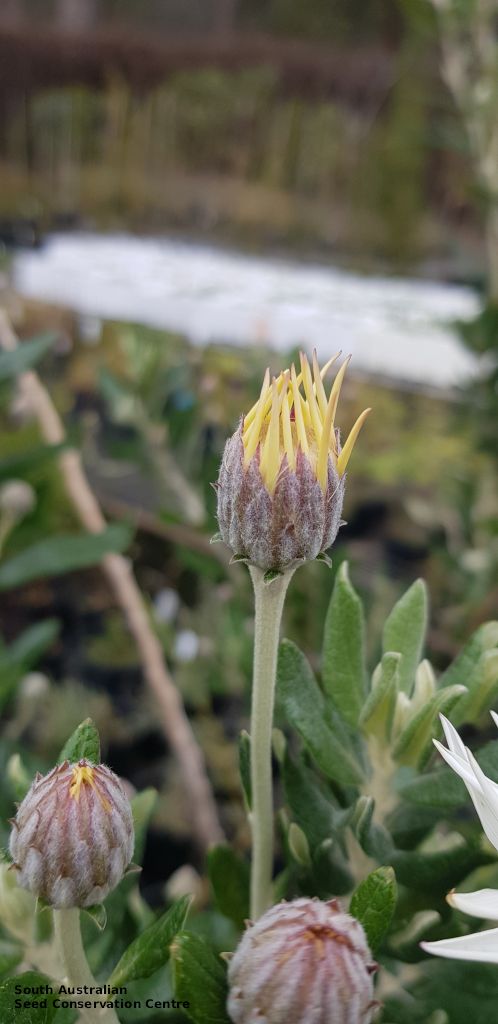
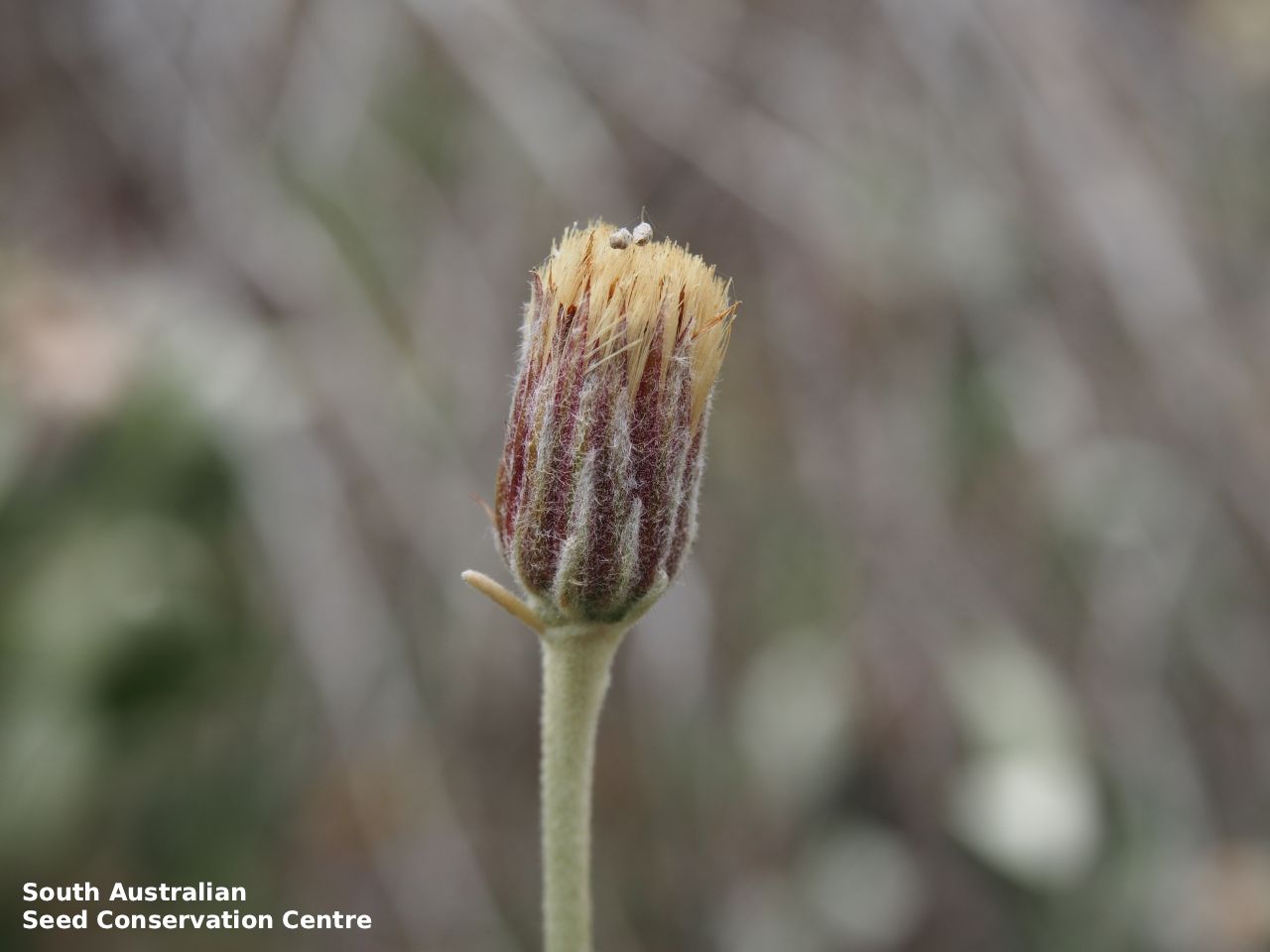

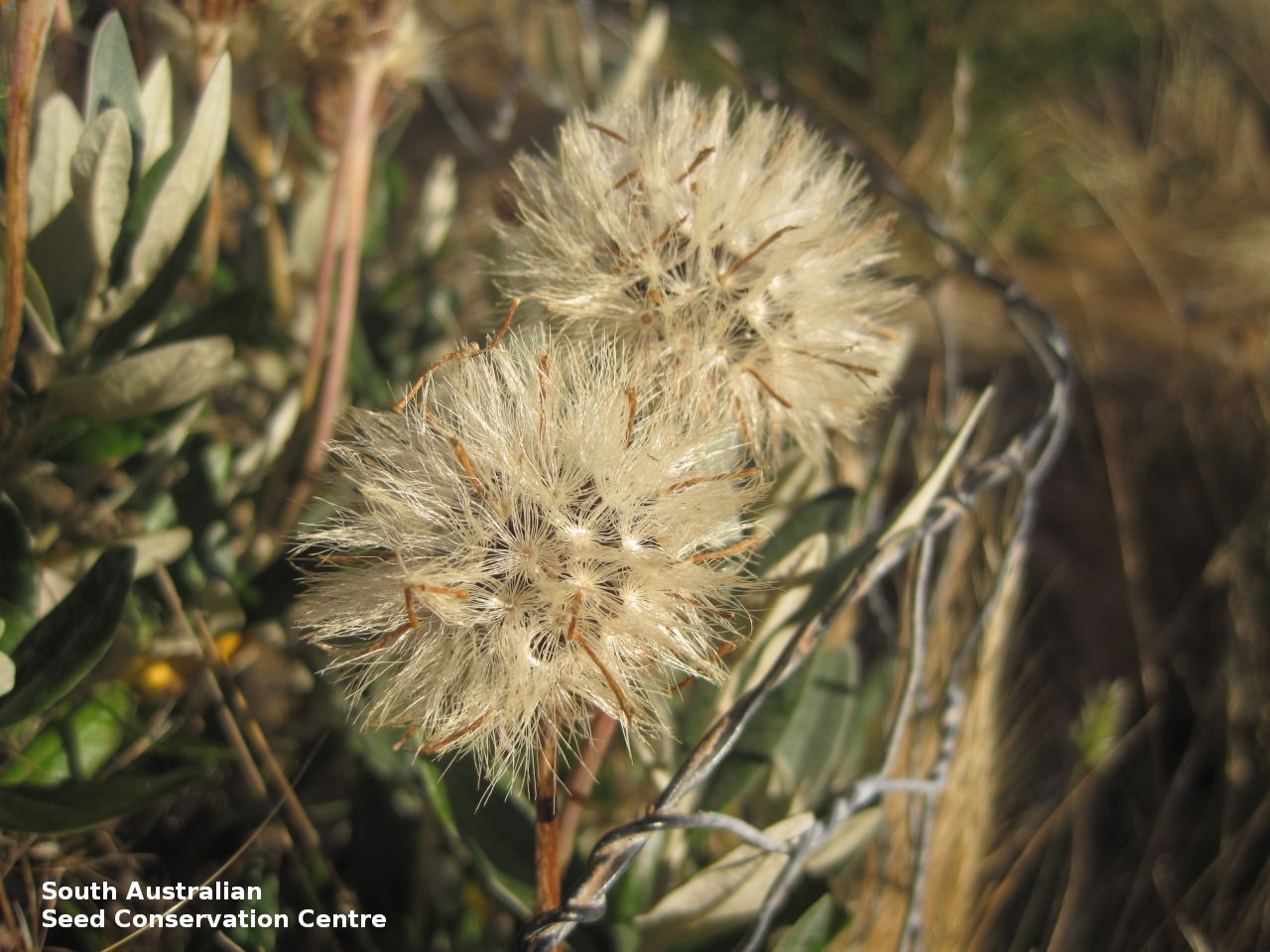
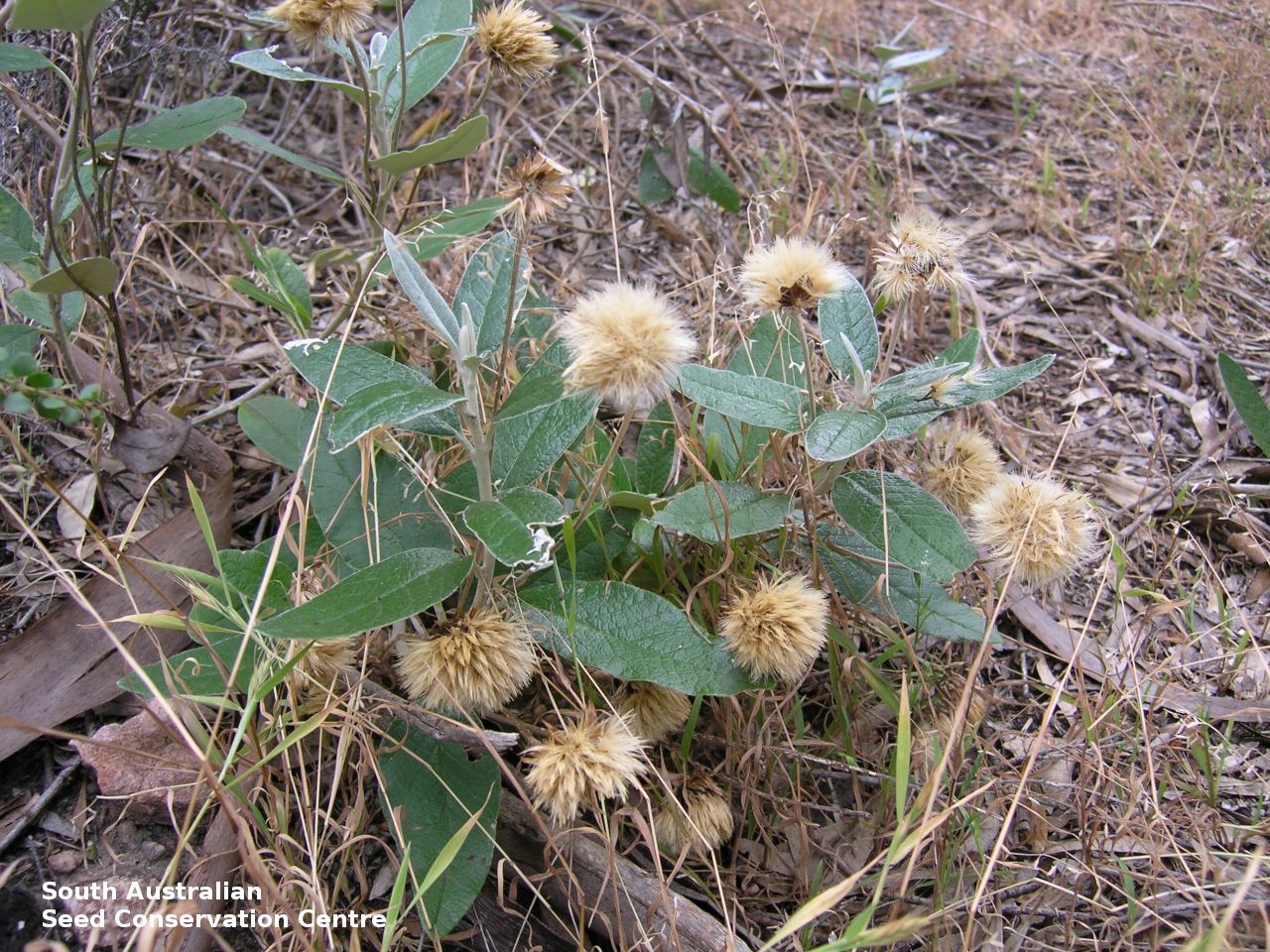
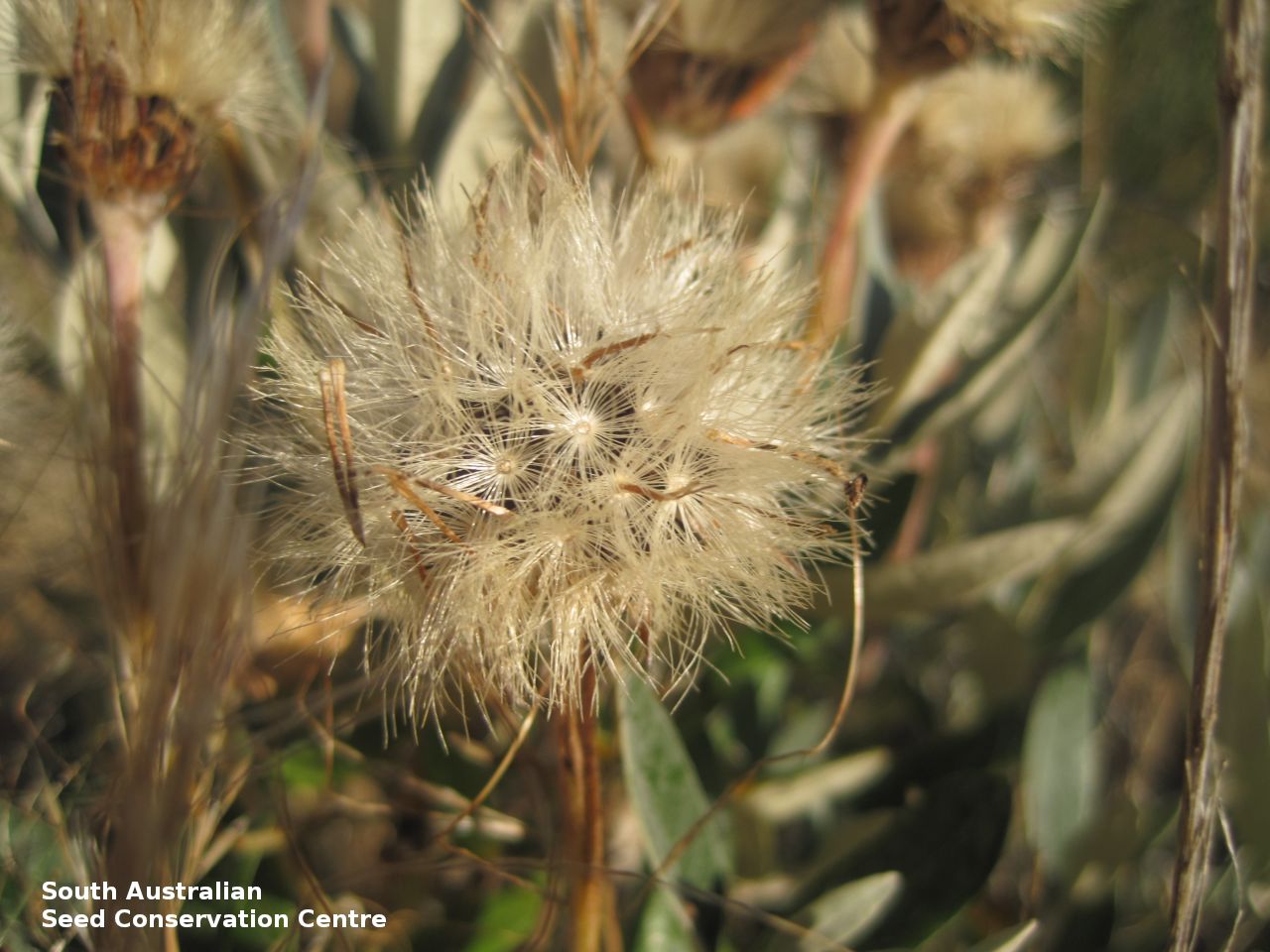
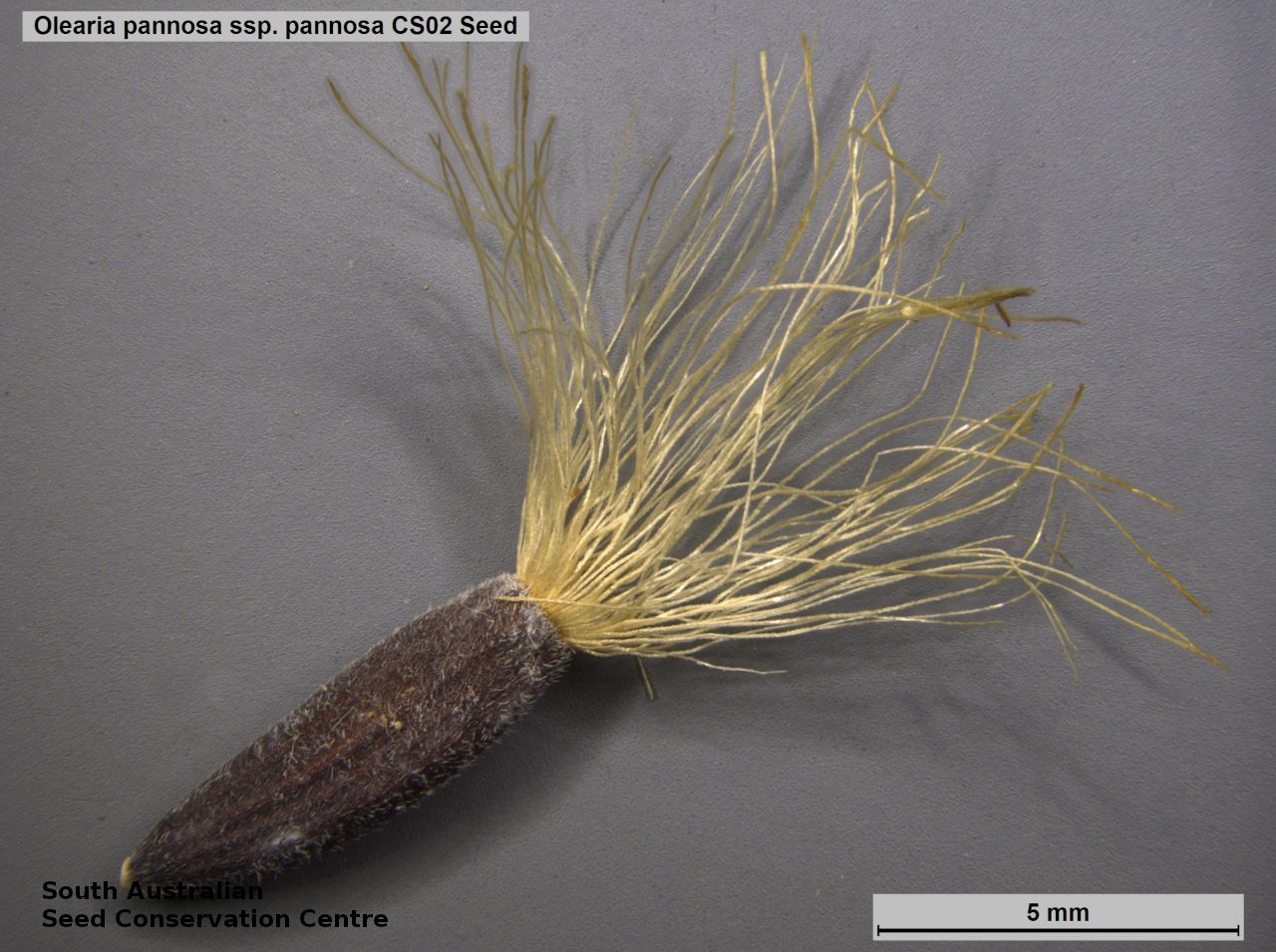
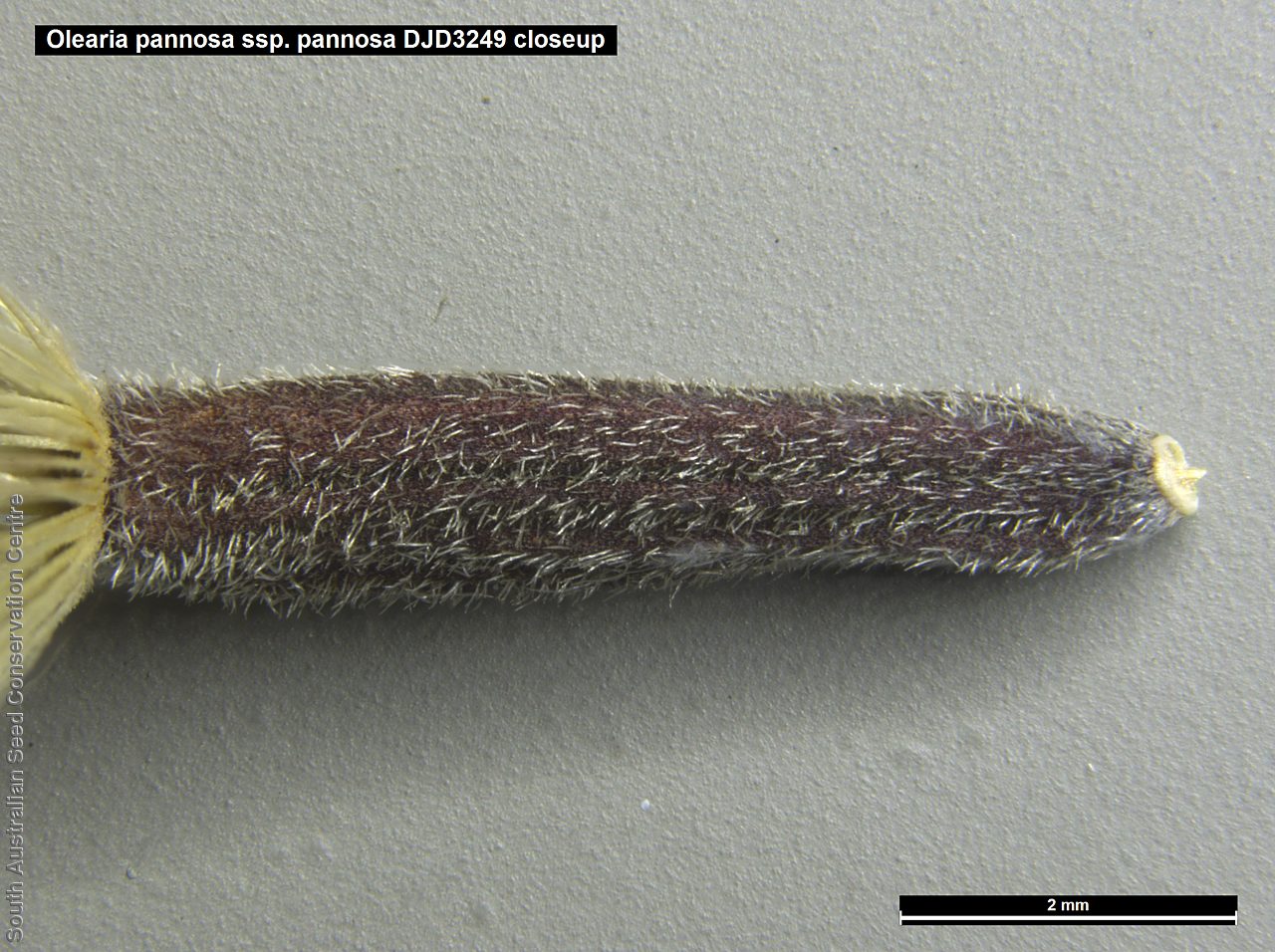
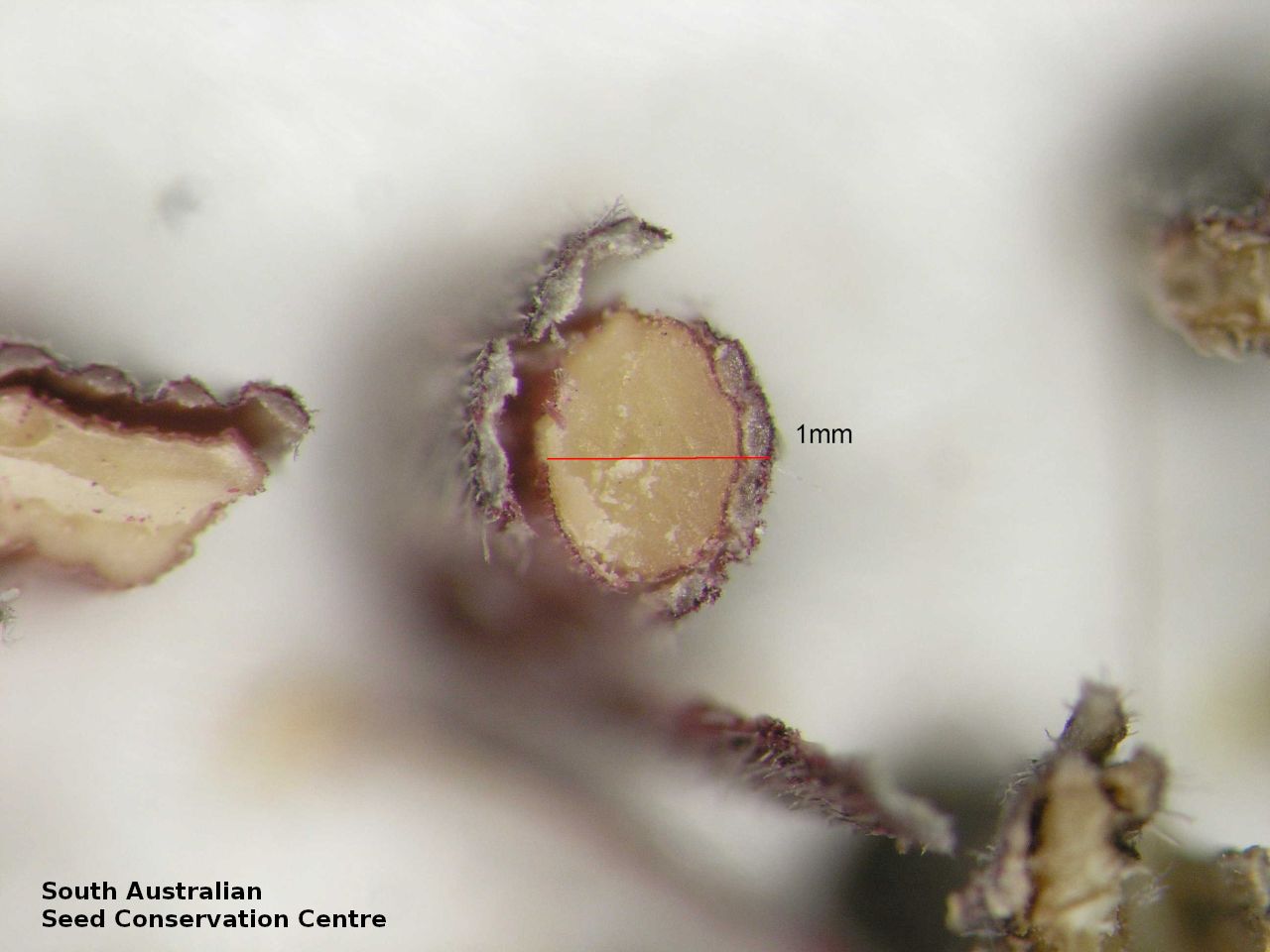
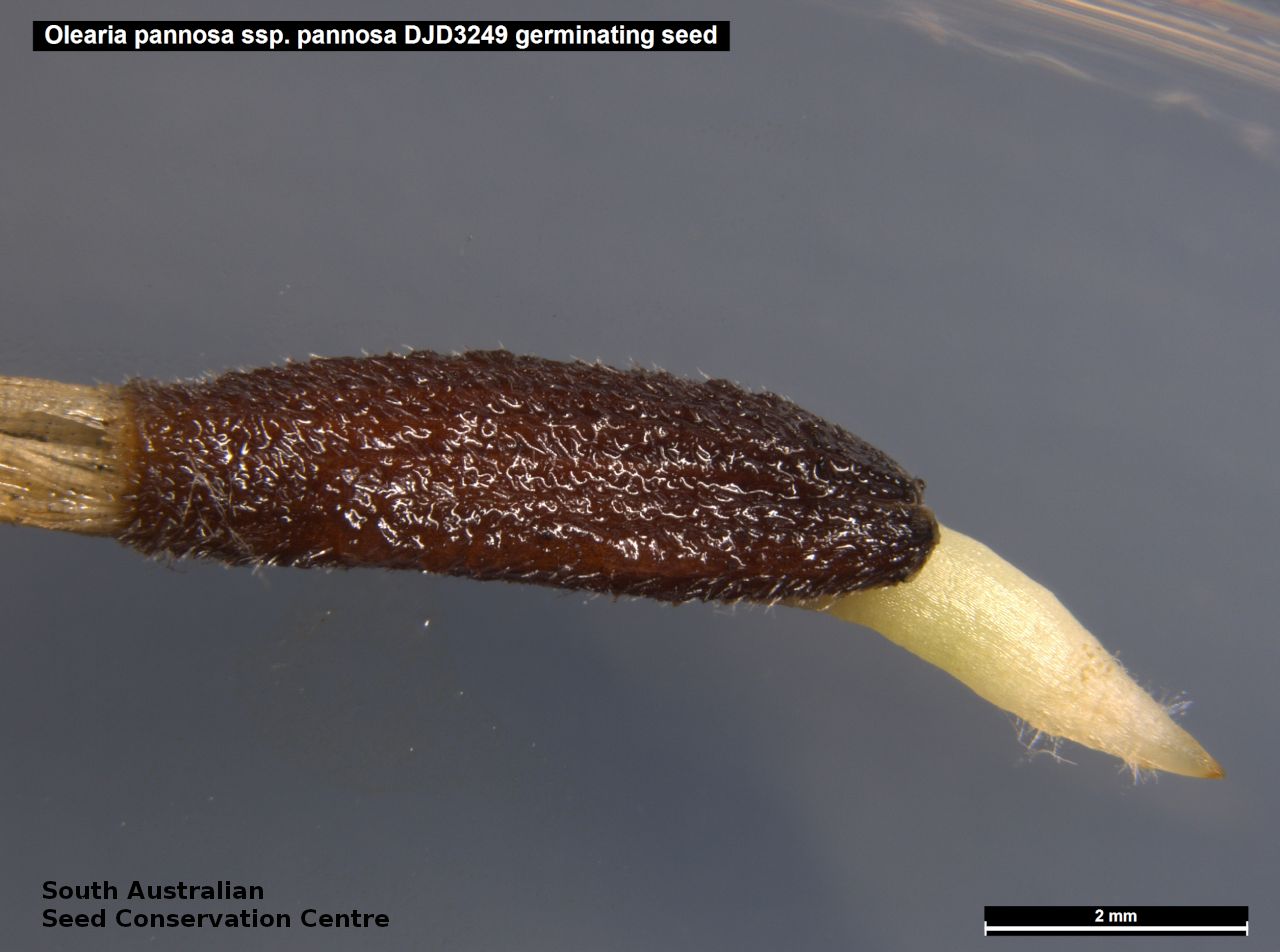
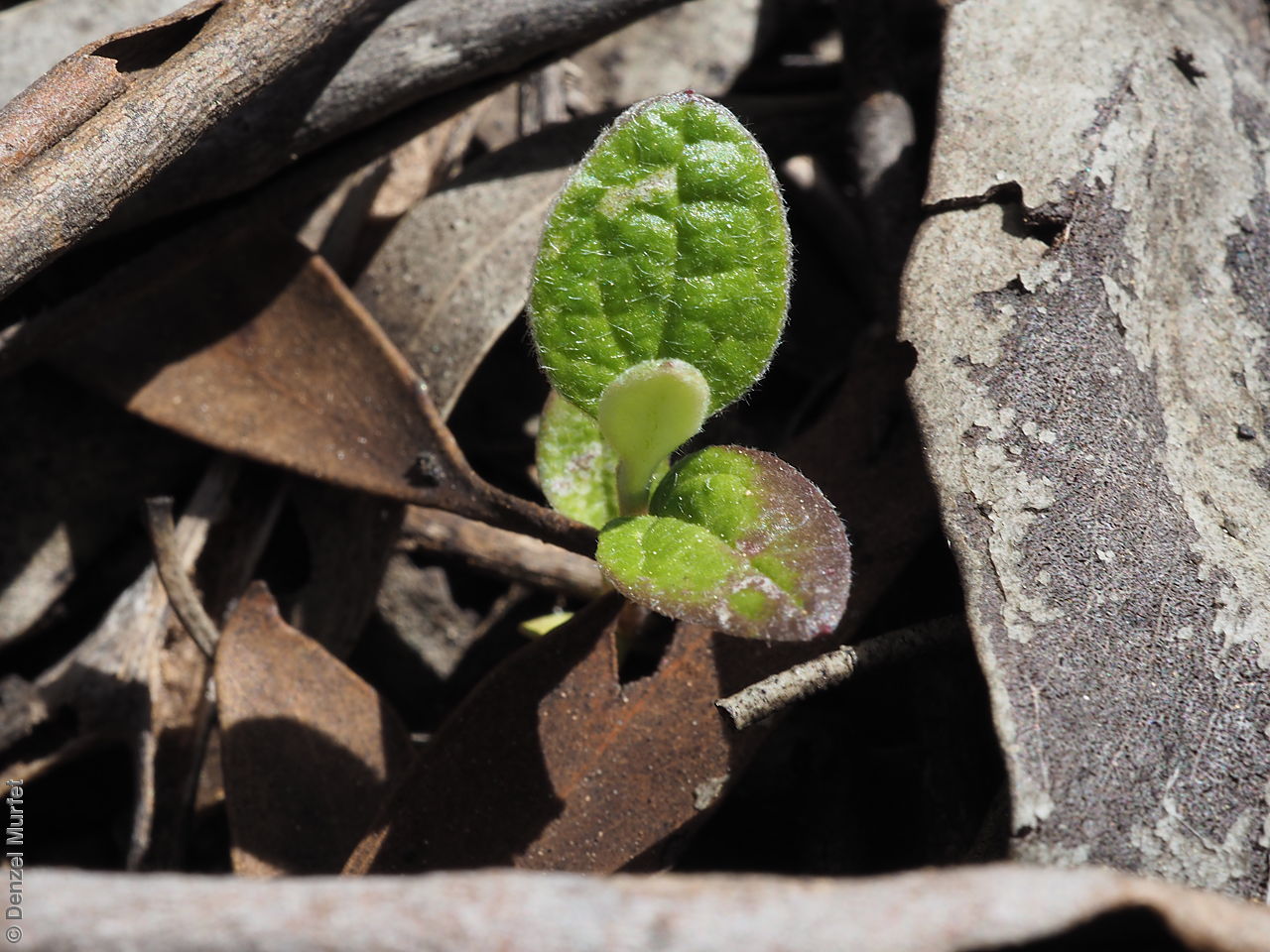
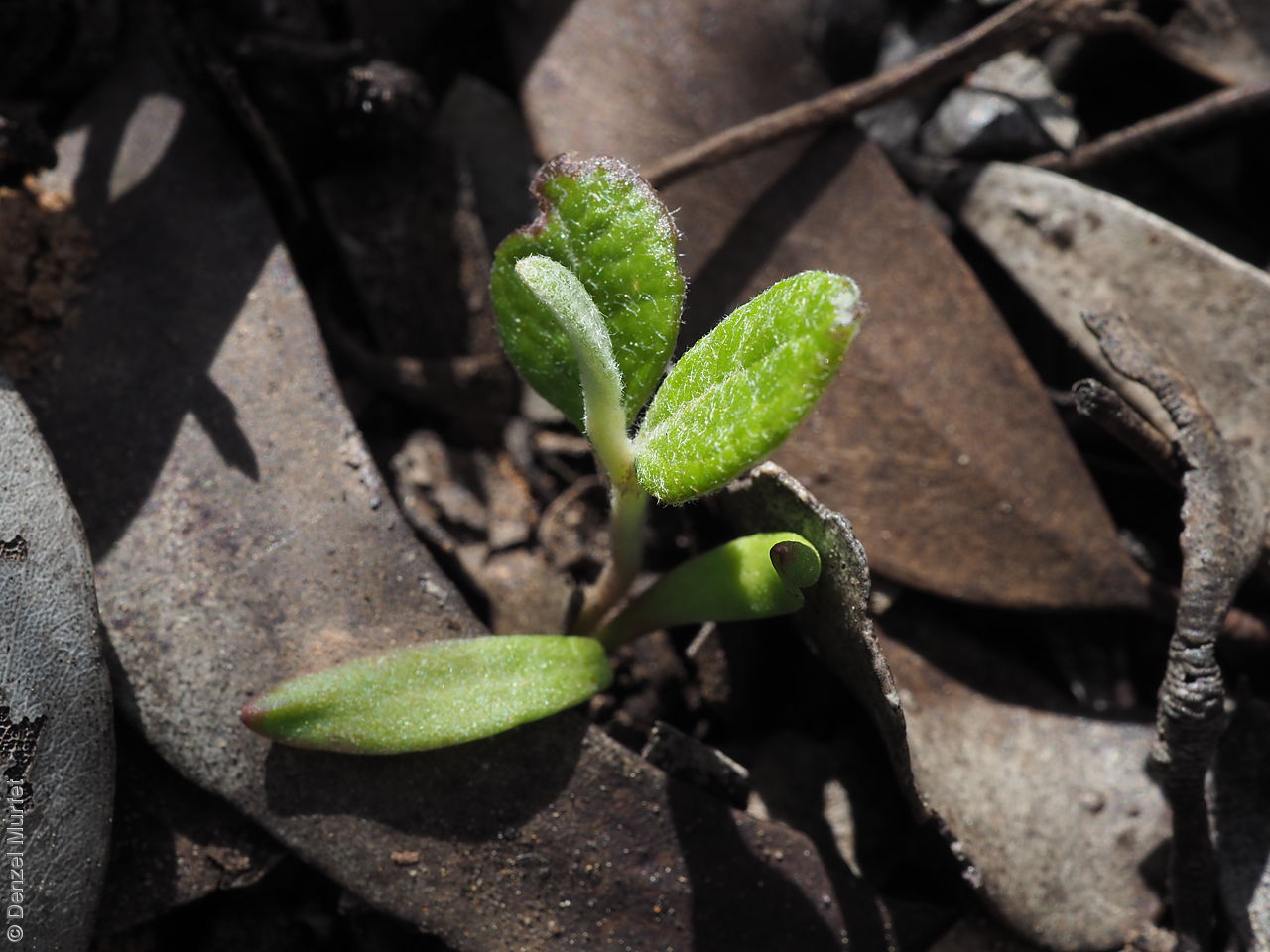

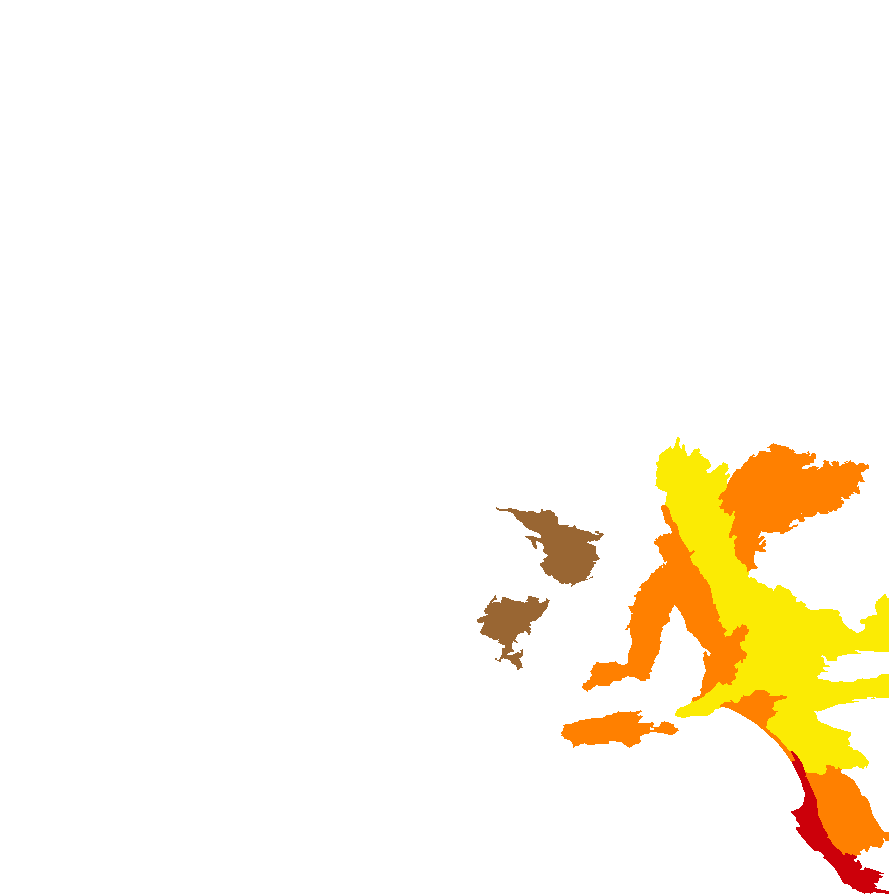
Botanical art
Prior names
Steetzia pannosa
Aster pannosus
Eurybia pannosa
Common names
Silver Daisy-bush
Etymology
Olearia named after Johann Gottfried �lschl�ger (1603-1671), 17th century German horticulturist and author of a flora of Halle in Germany (his name was latinized to Olearius). Alternatively, it maybe from the Latin 'olearius' pertaining to oil, from 'olea', for olive tree; alluding to the first named species resembling the olive.
Distribution and status
Endemic to South Australia and found scattered in the southern part using on road sides and with few individuals. Native. Rare in South Australia.
Herbarium regions: Flinders Ranges, Eyre Peninsula, Northern Lofty, Murray, Yorke Peninsula, Southern Lofty, Kangaroo Island, South Eastern, Green Adelaide
AVH map: SA distribution map (external link)
Plant description
Spreading undershrub or shrub to 1.5m high, producing root suckers. Stems woody at least at the base, branched with appressed hairs. Leaves with petioles to 15mm long, broad-ovate to elliptic, acute to shallowly cordate at the base, acute to obtuse at the apex, to 9cm long and 5cm wide, prominently reticulate-veined, dark green and shiny above and white- to rusty-tomentose below with margins flat. Flower head solitary, terminal and in the upper leaf axils, on long stalk to 30cm long often with 1 or 2 reduced leaves. Flowers large, white rarely pale-mauve daisy with a yellow centre. Fruits are large fluffy daisy heads containing numerous seeds. Seeds are striated, semi-flat, brown to dark red achenes to 8mm long and 2mm wide covered in white hairs and with a pale yellow pappus bristles to 10mm long. Seed embryo type is spatulate fully developed.
Seed collection and propagation
Collect seeds between October and December. Collect heads that are large and fluffy. Either pick off the whole heads or use your finger and pull off the seeds from the head. Mature seeds will come off easily. Place the heads in a tray for a week to dry. No cleaning is required if only pure seeds are collected. If heads are collected, then rub the heads gently with your hands to dislodge the seeds. Viable seeds will be fat and hard. Store the seeds with a desiccant such as dried silica beads or dry rice, in an air tight container in a cool and dry place. From twelve collections, the seed viability were low to average, ranging from 15% to 70%. Seeds can be heavily predated. Viable seeds should be fat, hard and a dark red brown colour. Seeds are non-dormant, viable seed should germinate readily.
| Location | No. of seeds (weight grams) | Number of plants | Date collected | Collection number Collection location | Date stored | % Viability | Storage temperature |
|---|---|---|---|---|---|---|---|
| BGA | 2,250 (14.5 g) | 40 | 18-Nov-2004 | DJD37 Southern Lofty | 31-Mar-2006 | N/C | -18°C |
| BGA | 1,650 (10.67 g) | 30 | 1-Dec-2004 | DJD55 South Eastern | 31-Mar-2006 | N/C | -18°C |
| BGA MSB | 1,400 (9 g) 1,400 (9 g) | 40 | 1-Dec-2004 | DJD56 South Eastern | 31-Mar-2006 | 70% | -18°C |
| BGA | 5,500 (28.88 g) | 23-Nov-2005 | CSO2 Murray | 14-Sep-2006 | 65% | +5°C, -18°C | |
| BGA | 4,000 (12.91 g) | 6-Dec-2005 | CSO1 Southern Lofty | 14-Sep-2006 | 15% | +5°C, -18°C | |
| BGA | 1,600 (8.31 g) | 12-Dec-2005 | TJ3 Yorke Peninsula | 14-Sep-2006 | 15% | +5°C, -18°C | |
| BGA | 11,900 (50.1 g) | 30+ | 30-Dec-2005 | KHB33 Flinders Ranges | 14-Sep-2006 | 15% | +5°C, -18°C |
| BGA | 3,600 (15.88 g) | 6-Dec-2005 | CSO3 Southern Lofty | 14-Sep-2006 | 30% | +5°C, -18°C | |
| BGA | 1,100 (3.06 g) | 4 | 18-Oct-2006 | DJD602 Yorke Peninsula | 1-Aug-2007 | 15% | -18°C |
| BGA | 2,800 (10.85 g) | 18-Oct-2006 | DJD572 Yorke Peninsula | 1-Aug-2007 | 65% | +5°C, -18°C | |
| BGA | 5,000 (22.42 g) | 3 | 17-Oct-2006 | DJD595 Yorke Peninsula | 1-Aug-2007 | 45% | +5°C, -18°C |
| BGA | 6,300 (24.25 g) | 25-Nov-2010 | DJD2054 Southern Lofty | 1-Nov-2012 | 34% | -18°C | |
| BGA | 4,700 (14.7 g) | 14-Nov-2008 | T.Jury Yorke Peninsula | 1-Jan-2016 | 40% | -18°C | |
| BGA | 19,600 (69.6 g) | 30+ | 12-Nov-2015 | DJD3249 Southern Lofty | 2-May-2017 | 55% | +5°C, -18°C, -80°C |
| BGA | 19,000 (75.41 g) | 8 | 24-Oct-2018 | DJD3804 Yorke Peninsula | 24-Apr-2019 | 5% | -18°C |
| BGA | 560 (4.320 g) | 15 | 12-Oct-2020 | KHB1028 South Eastern | 28-Jun-2021 | 90% | -18°C |
| BGA | 5,500 (21.140 g) | 1 | 1-Dec-2020 | K.H.Brewer Southern Lofty | 7-Jul-2022 | 65% | -18°C |
Number of plants: This is the number of plants from which the seeds were collected.
Collection location: The Herbarium of South Australia's region name.
% Viability: Percentage of filled healthy seeds determined by a cut test or x-ray.